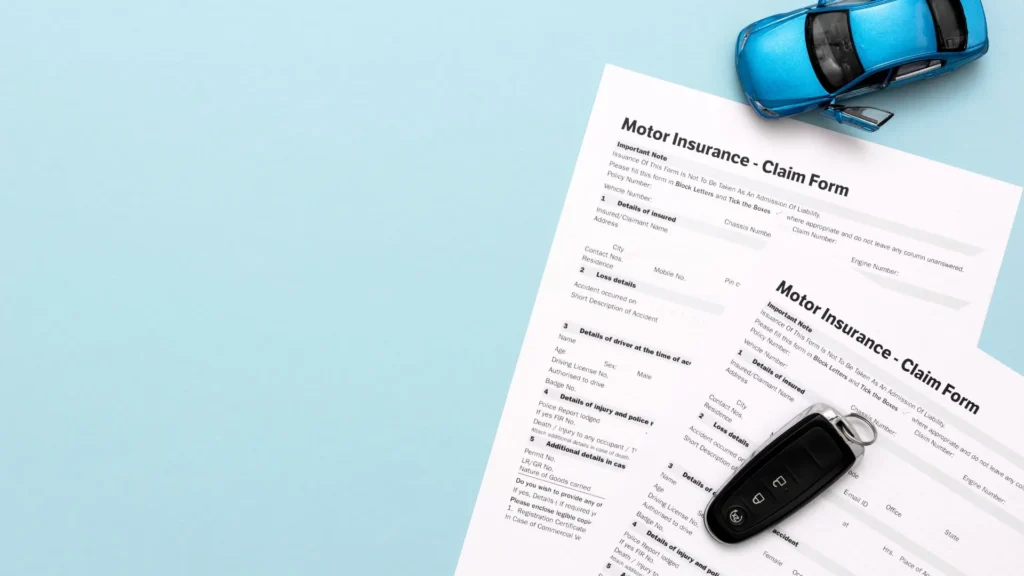Being involved in a car accident can be a nerve-wracking experience and lead to concerns about the impact on your car insurance rates. Therefore, it is crucial to compare car insurance quotes. Use Beem’s online comparison tool to find the best coverage in your budget. We further explore the factors that affect how much car insurance goes up after an accident and provide valuable tips on lowering insurance rates after such an incident. We will also discuss how long an accident stays on your record and whether your car insurance rates will rise if you are not at fault.
How Much Does Car Insurance Go Up After an Accident?
One of the most common questions asked by policyholders is, “How much does car insurance go up after an accident?”. Car insurance rates can surge by an average of 49% if you cause an accident. However, the exact answer may vary depending on several factors. Typically, insurance companies consider the following when determining the rate increase:
At-Fault or Not
If you were at fault for the accident, you are more likely to see a substantial increase in your insurance rates. This is because you pose a higher risk to the insurance company. On the other hand, if you were not at fault, your rates may not increase or might increase only slightly.
Severity of the Accident
The extent of the damage and the cost of repairs play a significant role in determining the rate increase. Severe accidents with property damage and injuries will likely lead to higher premium hikes.
Driving History
Your past driving record is crucial. If you have a history of accidents or traffic violations, your insurance rates may increase more than someone with a clean driving record.
Location
The location of the accident can also impact the rate increase. Certain areas with higher accident rates may result in more substantial premium hikes.
Insurance Company
Different insurance companies have varying policies regarding rate increases after accidents. It’s essential to review your insurer’s guidelines to understand how they handle accident insurance.
also know about: is car insurance tax deductible
Clean Record vs After Accident Car Insurance Cost
| State | Clean record | After accident | Difference |
| Alabama | $139 | $210 | 51% |
| Alaska | $117 | $166 | 41% |
| Arizona | $160 | $227 | 42% |
| Arkansas | $138 | $214 | 56% |
| California | $146 | $296 | 104% |
| Colorado | $168 | $242 | 44% |
| Connecticut | $171 | $270 | 58% |
| Delaware | $171 | $233 | 36% |
| Florida | $238 | $344 | 44% |
| Georgia | $125 | $195 | 56% |
| Hawaii | $156 | $212 | 36% |
| Idaho | $99 | $139 | 40% |
| Illinois | $144 | $223 | 55% |
| Indiana | $106 | $167 | 57% |
| Iowa | $127 | $184 | 44% |
| Kansas | $138 | $197 | 42% |
| Kentucky | $170 | $251 | 47% |
| Louisiana | $198 | $278 | 41% |
| Maine | $93 | $146 | 56% |
| Maryland | $143 | $217 | 52% |
| Massachusetts | $178 | $271 | 52% |
| Michigan | $399 | $544 | 37% |
| Minnesota | $140 | $223 | 59% |
| Mississippi | $130 | $223 | 71% |
| Missouri | $154 | $221 | 44% |
| Montana | $146 | $212 | 45% |
| Nebraska | $142 | $195 | 38% |
| Nevada | $216 | $334 | 55% |
| New Hampshire | $130 | $208 | 60% |
| New Jersey | $159 | $287 | 80% |
| New Mexico | $139 | $204 | 47% |
| New York | $149 | $199 | 34% |
| North Carolina | $109 | $171 | 56% |
| North Dakota | $138 | $191 | 39% |
| Ohio | $108 | $159 | 47% |
| Oklahoma | $163 | $240 | 47% |
| Oregon | $152 | $238 | 57% |
| Pennsylvania | $124 | $185 | 49% |
| Rhode Island | $198 | $250 | 26% |
| South Carolina | $136 | $199 | 46% |
| South Dakota | $148 | $205 | 39% |
| Tennessee | $113 | $157 | 40% |
| Texas | $136 | $205 | 51% |
| Utah | $138 | $211 | 53% |
| Vermont | $92 | $139 | 51% |
| Virginia | $118 | $181 | 54% |
| Washington | $128 | $180 | 41% |
| Washington, D.C. | $163 | $238 | 47% |
| West Virginia | $136 | $201 | 47% |
| Wisconsin | $105 | $169 | 61% |
| Wyoming | $126 | $162 | 28% |
How Can I Lower My Insurance Rates After an Accident?
While an accident can lead to increased insurance rates, there are ways to mitigate the impact and maintain lower premiums:
- Accident Forgiveness: Some insurance companies offer accident forgiveness programs, meaning your first at-fault accident might not increase the rate. Check with your insurer to see if they provide this option.
- Defensive Driving Course: If you complete a defensive driving course, it demonstrates your commitment to safe driving and might lead to discounts on your premiums.
- Increase Deductibles: Consider raising your deductibles, but only if you can afford to pay higher out-of-pocket costs in case of another accident.
- Safe Vehicle Discounts: Insurance companies frequently provide a small discount for vehicles with safety features, including airbags, anti-lock brakes, anti-theft devices, etc.
- Hybrid/Electric Car Discounts: Insurers are now more inclined to offer discounts to owners of hybrid or electric cars due to their positive environmental impact. Choosing a green vehicle benefits the planet and can lead to potential cost savings on insurance premiums.
- Bundle Policies: Bundling your auto insurance with other policies, such as home insurance, can often result in discounts.
- Shop Around: Compare quotes from different insurance companies to find the most competitive rate after an accident.
How Long Does an Accident Stay On Your Record?
Accidents typically stay on your driving record for several years. In the United States, the duration can vary depending on the state and the accident’s severity. On average, accidents may remain on your record for three to five years. During this time, your insurance rates may be affected, making it crucial to maintain safe driving habits to reduce the long-term impact.
Will My Car Insurance Rates Go Up If I Am Not at Fault for the Accident?
If you are not at fault for the accident, your insurance rates may not increase with your current insurer. However, insurance laws can vary by state, and there is no guarantee that your rates won’t be affected if you switch to a new insurance provider. It’s essential to discuss your specific situation with your insurer and understand how they handle not-at-fault accidents.
Conclusion
Car accidents can significantly impact your car insurance rates, especially if you are at fault. However, there are various ways to manage the rate increase and maintain low auto insurance rates:
- Focus on safe driving practices to avoid future accidents and traffic violations.
- Explore accident forgiveness programs and other discounts offered by your insurer.
- Consider taking a defensive driving course to affirm your commitment to safe driving.
- Compare quotes from different insurers to find the best rate after an accident.
Remember that accidents typically stay on your record for a few years. Still, you can work towards improving your driving history and reducing the long-term impact on your insurance rates. Besides accidents, auto insurance costs also depend on factors like your age, driving record, and the type of vehicle you drive. Use Beem to get quotes from different insurance companies to compare prices and get the best deal as per your requirements.
FAQs
Will My Insurance Rates Increase After a Not-At-Fault Accident?
While your rates may not increase with your current insurer, it’s essential to check with them to understand their policy regarding not-at-fault accidents. If you switch to a new insurance provider, their policies may differ, and your rates could be affected.
How Can I Find the Most Competitive Rate After an Accident?
Compare insurance quotes from different providers to analyze the best options after an accident. Consider coverage options, deductibles, and discounts to make an informed decision.
Can I lower My Insurance Rates by Bundling Policies?
Bundling your car insurance with other policies like home or renters insurance can result in discounts, helping you maintain lower insurance rates.





























